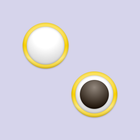Gold nanoparticles have a good safety profile and are often used as a non-toxic control in many studies. Bulk gold is well known to be safe and chemically inert, and gold-based compounds have been used in the clinic as anti-inflammatory agents to treat diseases such as rheumatoid arthritis.1 Furthermore, radioactive gold microparticles have been effectively used in local radioisotope cancer therapy.2 Nanoscale gold particles show great potential as photothermal therapy agents and as imaging agents in living systems.3 In most of these imaging and therapeutic applications, the gold particles are ~5 nm or larger. At sizes larger than ~5 nm, the gold is treated as chemically inert, similar to the bulk material.
Like pharmaceutical drugs which have different functional groups within their chemical structure that affect their reactivity, the safety and efficacy of nanoparticles is dependent on the nanoparticle's surface. Surface capping agents such as antifouling molecules, recognition molecules, or steric stabilizers affect the nanoparticle's fate and transport within biological and environmental systems.4 As with any complex system, each nanoparticle should be studied for in vivo use with a wide variety of tests to gain more information because nanoparticle toxicity can vary depending on the size, shape and surface as well as dose.5 A number of assays can be used to predict nanoparticle safety with the most common measuring the impact of nanoparticle exposure on cells. Some common assays are the LDH assay and the MTT assay which is considered the “gold standard” for cytotoxicity.6
Environmentally, gold nanoparticles have shown to be benign when released into the ecosystem. In exposure studies, gold nanoparticles were found to accumulate in filter feeders but no harmful effects were observed.7 Gold nanoparticles have also been shown to be non-toxic to zebrafish (an excellent in vivo model which has been used to assess environmental toxicity due its high degree of homology to the human genome).8
Although studies are still in progress, current results show that gold nanoparticles, like the bulk material, are at low risk for toxicity.3
References
- Finkelstein, A. E.; Walz, D. T.; Batista, V.; Mizraji, M.; Roisman, F; Misher, A. Ann Rheum Dis. 1976, 35, 251–257.
- Metz, O.; Stoll, W.; Plenert, W. Cancer, 1982, 49, 224–228.
- Alkilany, A. M.; Murphy, C. J. Nano. Res. 2010, 12, 2313-2333
- a) Takahashi, H.; Niidome, Y.; Niidome, T.; Kaneko, K.; Kawasaki, H.; Yamada, S. Langmuir 2006, 22, 2–5. b) Hauck, T.S.; Ghazani, A. A.; Chan, W. C. W. Small 2008, 4, 153– c) Leonov, A. P.; Zheng, J. W.; Clogston, J. D.; Stern, S. T.; Patri, A. K.; Wei, A. ACS Nano.2008, 2, 2481–2488. d) Alkilany, A. M.; Nagaria, P. K.; Hexel, C. R.; Shaw, T. J.; Murphy, C. J.; Wyatt, M. D. Small 2009, 5, 701–708.
- a) Lewinski, N.; Colvin, V.; Drezek, R. Small 2008, 4, 26–49. b) Marquis, B. J.; Love, S. A.; Braun, K. L.; Haynes, C. L. Analyst 2009, 134, 425-439.
- Ferry, J. L.; Craig, P.; Hexel, C.; et al. Nat Nanotechnol. 2009, 4, 441–444.
- Bar-Ilan, O.; Albrecht, R. M.; Fako, V. E.; Furgeson, D.Y. Small2009, 5, 1897–1910.
- Fako, V. E.; Furgeson, D. Y. Drug Deliv. Rev. 2009, 61, 478–486.




